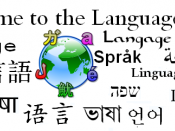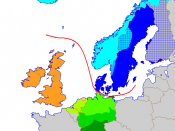Ed Bandemer
Jacobson M
Honors English 2
Research Paper
Over the years the English language has changed dramatically. The English language is an original member of the Indo-European family of languages. The Indo-European family of language is very large. This family includes most of the European languages spoken today. It includes the Slavic languages, the Baltic languages of Latvian and Lithuanian, the Celtic languages, Greek, the Germanic languages, the Indo-Iranian languages, including Hindi and Sanskrit Latin, and the modern Romance languages. Out of all of those languages none have evolved greater than the English language. It began in 500 AD. The English language is like computers, you can add new software to it and make it better than it was before.
The influence of the original Indo-European language, designated proto-Indo-European, and can be seen today, even though no written record of it exists. Of these branches of the Indo-European family, two are, for our purposes of studying the development of English.
These two are Paramount importance, and the Germanic and the Romance. It is called that because the Romance languages derive from Latin, and the language of ancient Rome, but not because of any bodice-ripping literary genre. Even though it is considered to be from Indo-European family of languages, the English is actually in the Germanic group of languages. Around the second century BC, this Common Germanic language split into three distinct sub-groups. One group was the East Germanic, and those people migrated back to southeastern Europe. No East Germanic language is spoken today, and the only written East Germanic language that survives is Gothic. Another one was the North Germanic, and that evolved into the modern Scandinavian languages of Swedish, Danish, Norwegian, and Icelandic languages. Finally, the West Germanic is the ancestor of modern German, Dutch, Flemish,


